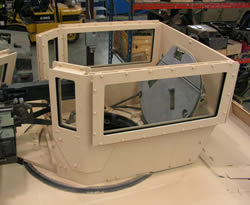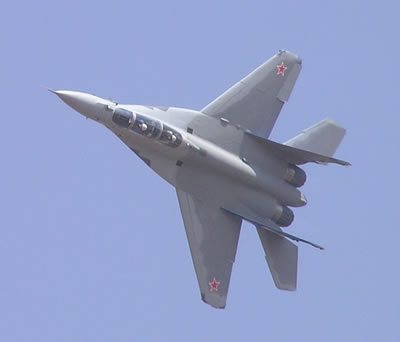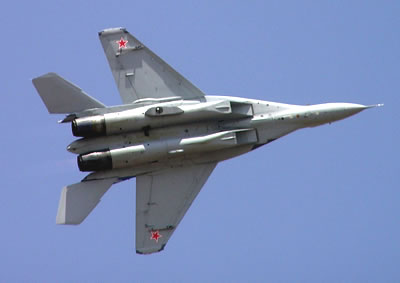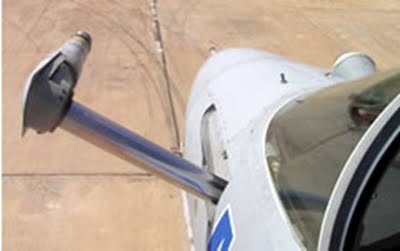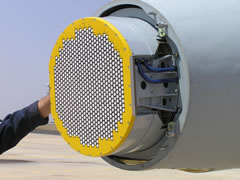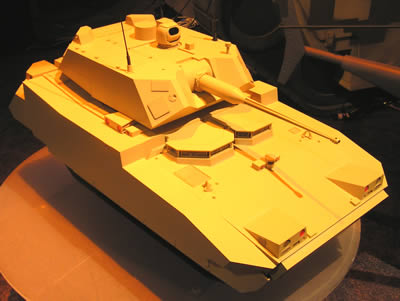The present events in the Gaza Strip have to be viewed within a wider context of the Middle East strategic framework, in order to search for a solution of this rapidly escalating crisis situation.
The real force behind the Gaza mayhem seems to be, a combined al Qaeda and Iran strategy, strange bedfellows perhaps, but for the time being, closely-linked partners in a common strategic goal to establish “Hamastan” as a forward base for Global terrorism. Al Qaeda’s ultimate objective is to destabilize and destroy the moderate Arab nations, first in line post- Mubaraq’s Egypt, then the Hashemite Kingdom of Jordan and finally, the Sunni cradle of Saudi Arabia. A similar aim is Tehran’s Shiite Crescent strategy – thus both partners are united, even if their spiritual heritance differs widely and even conflicts sharply, in their religious deism.
According to Dr. Boaz Ganor of the Herzliya Interdisciplinary Center, “Global Jihad’s main aim is to topple moderate Arab and Muslim regimes, like that in Egypt, and bring like-minded Islamic radicals to power.” Shin Beit chief Yuval Diskin, addressing the Knesset (Israeli Parliament) Foreign Affairs and Security Committee, voiced deep concern that al Qaeda was creeping ever closer to Israel from its Sinai terror base.
The fact that Al Qaeda terror network has already infiltrated the West Bank and Gaza Strip, was made public last year, when in March 2006, Palestine Chairman Mahmoud Abbas claimed that the Islamic organization had infiltrated the West Bank and Gaza Strip, in which “its operations could have appalling consequences”.
Only last week, the credibility of these warnings was vindicated when a group believed to be affiliated with Al-Qaeda, or at least espousing its ideology, attacked a UNWRA-run school celebration in Rafah, in the southern edge of the Gaza Strip, killing one person and injuring five others. The attack in Rafah, along with other recent sporadic incidents including the yet-to-be-resolved kidnapping of BBC Gaza correspondent Alan Johnston, are being seen as ominous signs for the future.
Hamas militant leaders had followed with concern recent preparations by Palestinian Authority Chairman Mahmoud Abbas (Abu Mazen) and his adviser Mohammed Dahlan in preparing Palestine Liberation Organization’s (PLO) military arm, Fatah for a final confrontation in the Gaza Strip. They watched in awe, as the Fatah leadership had won extensive financial grants from the United States and European countries, including American military equipment and weapons from the moderate Arab countries. A full brigade of Fatah elite forces was under training in Egyptian military camps in Sinai, ready to deploy into the Strip.
 Thus the Hamas militant leadership has decided it was time to win full control of the Gaza Strip, before it was too late. Indeed, Hamas is now fighting its ultimate battle against Fatah for control of the Gaza Strip. No quarter is asked nor given in this all-out carnage, in which brother fights brother ruthlessly in the lawless streets of squalor.
Thus the Hamas militant leadership has decided it was time to win full control of the Gaza Strip, before it was too late. Indeed, Hamas is now fighting its ultimate battle against Fatah for control of the Gaza Strip. No quarter is asked nor given in this all-out carnage, in which brother fights brother ruthlessly in the lawless streets of squalor.
Meanwhile, the million and half numbering population is on the verge of a human disaster. People are scooped up in their houses, water and electric supply is failing, hospitals are breaking under the stress, as more and more wounded arrive, casualties from the brutal internecine war which is raging in the streets. There seems to be no way to prevent the infighting among Palestinian factions by a plethora of armed clans fighting this civil war, as the “official” Hamas leadership has lost control of the situation and is hiding, being itself targeted by the clan leaders.
 Fatah’s own leadership vacuum is the main reason for the group’s defeat in the current round. Palestinian Authority Chairman Mahmoud Abbas is still not showing signs of determination to intervene forcefully. On paper, Abu Mazen’s loyalist forces should number nearly 60,000 armed troops, but intelligence estimates assess that most of these will not fight, when deployed against Hamas in Gaza. This leadership vacuum is becoming even more blatant by strongman Mohammed Dahlan’s absence from the turbulent region. Dahlan is temporarily being hospitalized in Cairo following back surgery.
Fatah’s own leadership vacuum is the main reason for the group’s defeat in the current round. Palestinian Authority Chairman Mahmoud Abbas is still not showing signs of determination to intervene forcefully. On paper, Abu Mazen’s loyalist forces should number nearly 60,000 armed troops, but intelligence estimates assess that most of these will not fight, when deployed against Hamas in Gaza. This leadership vacuum is becoming even more blatant by strongman Mohammed Dahlan’s absence from the turbulent region. Dahlan is temporarily being hospitalized in Cairo following back surgery.
Latest Israeli intelligence assessment have therefore concluded, that Hamas, or better phrased, the fighting clans, have already won the battle for Gaza, which is ready to become an Islamic fundamentalist stronghold – ideal to al Qaeda or Iran establishing its long seeked forward base on the Mediterranean.
Under such impossible circumstances, the so-called “benchmarks” for Israel and the Palestinian Authority – recently laid out by U.S. Secretary of State Condoleezza Rice to promote peace – seem like a joke: No Israeli leader, in his right mind, can agree to the opening of a “safe passage” between Gaza and the West Bank.
Two major blunders have created this catastrophic situation: The US conduct of the post OIF war in Iraq, which has brought Iran itself terrified by the US conquest at first and still badly damaged by the Iraq-Iran war) into world focus and Israel’s irresponsible unilateral withdrawal from the Gaza strip, which virtually “invited” Hamas to power (this would never have happened as long as Yassir Arafat was in charge) and finally, Israel’s poor conduct of the Lebanon crisis, which has severely damaged Israel’s military deterrence in the region.
First and foremost to face this looming threat is the Jewish State of Israel. Through building a strategic alliance between Iran and the radical Palestinian forces in the territories, President Mahmoud Ahmadinejad is seeking to surround Israel from three sides – from the north, by rebuilding Hezbollah’s strategic rocket arsenal; from the West Bank, a threat to Israel’s heartland and from a strong military base in Gaza.
There is no doubt that Israel is currently facing a very serious dilemma.
On the one hand, it is inclined to refrain from a widespread response to the Qassam rocket offensive so as not to be lured into premature re-invading the Gaza Strip, a move that would effectively end the Fatah-Hamas bloodbath and unite the two fighting movements against their common enemy. Inevitably, at Israel’s Prime Minister’s Ehud Olmert’s governmental level, there is little enthusiasm for such a major move.
 On the other hand, Israel is no longer an innocent bystander to the internal Palestinian fighting. The first civilian casualties from the massive rocket attacks on Sderot made Israel a party to the internal conflict in Gaza and now urgently needs to take drastic measures in defending its civilians. It must be remembered, that Sderot and other targets along the Gaza Strip are located entirely within Israel’s sovereign territory, defined by international law in 1949. It may have been a strategic mistake to withdraw the IDF from the Gaza Strip in 2005, but once this was implemented any incursion by fire into this territory is strictly against international law, calling for full measures in self defense.
On the other hand, Israel is no longer an innocent bystander to the internal Palestinian fighting. The first civilian casualties from the massive rocket attacks on Sderot made Israel a party to the internal conflict in Gaza and now urgently needs to take drastic measures in defending its civilians. It must be remembered, that Sderot and other targets along the Gaza Strip are located entirely within Israel’s sovereign territory, defined by international law in 1949. It may have been a strategic mistake to withdraw the IDF from the Gaza Strip in 2005, but once this was implemented any incursion by fire into this territory is strictly against international law, calling for full measures in self defense.
Israel’s options are all critical: It can prepare an all-out military offensive to capture part, or all of the Gaza Strip, or call for an international force to administrate the Gaza Strip for an interim period until a viable Palestinian government can be formed to take over full responsibility (See our January, 2005 post: Two Palestinian Entities). The first option needs little elaboration to define the difficulties involved. The second option is even more complex and has sofar received little public attention (See our April 29, 2007 post: Military Confrontation with Hamas in Gaza Unavoidable).
If the United States are counting on General Keith Dayton’s plan to reform Abu Mazen’s “Presidential Guard” and maintain law and order in Gaza, it must be hallucinating, as Gaza was never easy to govern, even in better times. Perhaps the biggest tragedy is the “usual” conduct of the United Nations. All that the new UN Secretary General Ban Ki-moon could say last week, as the fighting raged in the streets of Gaza and rockets bombarded Sderot, was that “the fighting between Palestinian factions Hamas and Fatah and rocket attacks into Israel “unacceptable!” It would certainly need much more than that to clear up the mess which is enfolding in this sizzling powder keg.
But not all is yet lost. There are some solutions, which, if conducted under wise statesmanship, could still prevent at least, part of the looming danger.
A key player should be Egypt. President Hosni Mubarak has expressed great concern over the increasing strength of Hamas Egypt did not accept Hamas in power, as it became elected last year, especially in light of its growing ties with the Muslim Brotherhood, which leads the opposition in Egypt. A politically radicalized “Hamastan” which would give a boost to its own Islamic radicals, against which the government has long fought, is haunting the secular Cairo establishment. But only by enhancing its sofar minor efforts to close the Sinai-Rafah smuggling lifeline into the Gaza Strip, Egypt could virtually “starve” the fighting. All this needs, is to order to the troops already deployed and supervise that these order be implemented in full.
King Abdallah II has recently proposed a new framework for the Palestinian issue. Amman is acting out of concern for the shaky Palestinian Authority, which might threaten its security. Under this plan, Jordan proposed reconsidering a previously shelved Palestinian-Jordanian confederation, which calls for ending the occupation of Palestinian lands and their transfer under Amman’s control.  Under the plan, the confederation would be headed by the Jordanian monarch, but both parts of the state will have considerable independence, as well as their own governments. During the Arab-Israeli wars of 1948-49 and 1967, the Western Bank of the Jordan River and East Jerusalem were part of Jordan. The late King Hussein waived Jordan’s claims to Palestinian lands in the late 1980s.
Under the plan, the confederation would be headed by the Jordanian monarch, but both parts of the state will have considerable independence, as well as their own governments. During the Arab-Israeli wars of 1948-49 and 1967, the Western Bank of the Jordan River and East Jerusalem were part of Jordan. The late King Hussein waived Jordan’s claims to Palestinian lands in the late 1980s.
Jordan’s security services are searching a new strategy to fortify the kingdom against the shocks of the US troop withdrawal from Iraq, which would leave the kingdom exposed on two fronts: Iraq, where Amman expects the US military to start pulling out in late summer, and the West Bank, where the Palestinian Authority is on its last legs. Its breakdown would engulf the territory in the sort of chaos and violence which has already swept the Gaza Strip.
Unfortunately, there is sofar little enthusiasm for the King’s incentive. Egypt and Saudi Arabia are not in favor of these links. Cairo suspects that if the arrangement works on the West Bank, the Jordanians will want to scoop up the Gaza Strip too. Riyadh is historically opposed to any enhancement of the Hashemite throne, a former rival. But this could now change as all concerned apprehend the new threat to their own safety. Tehran is extremely troubled by Jordan’s proposal, which could in time form a strong counter-axis to its Shiite Crescent ambitions, if Syria and more Sunni states be drawn into this strategic initiative. With US approval, a strong Sunni axis, led by Saudi Arabia, Egypt and Jordan, could still redress the looming abyss, which is creating on Israel’s doorstep.


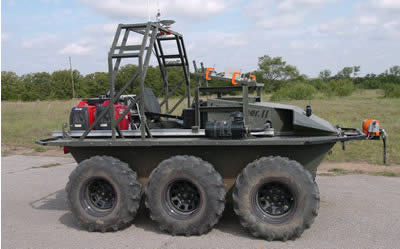
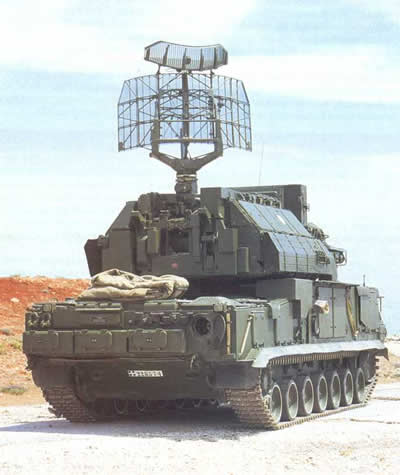
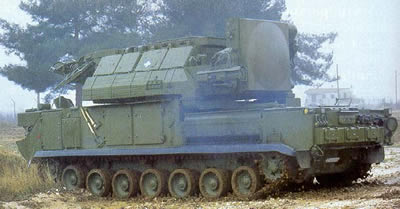
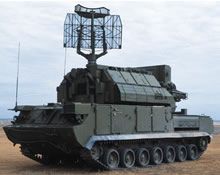
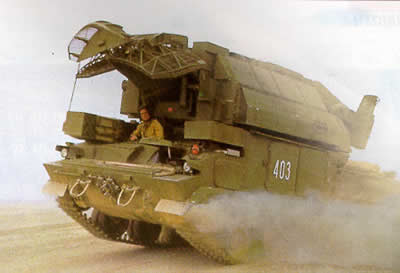
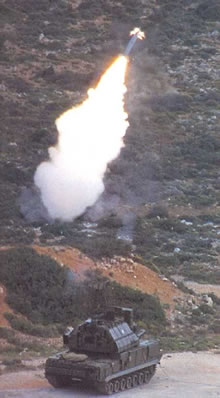
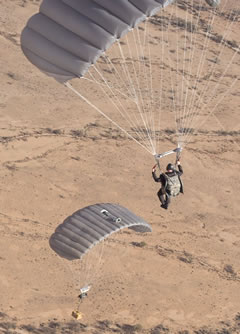


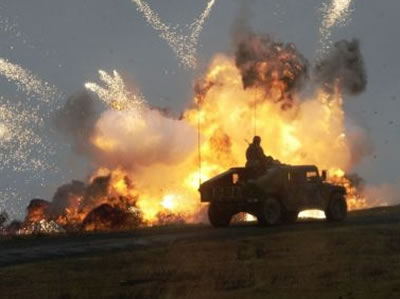
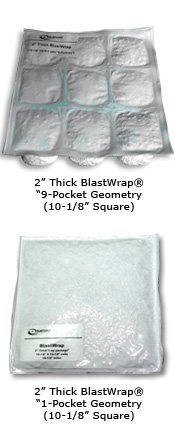

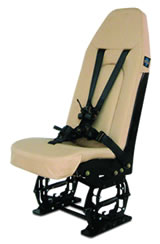
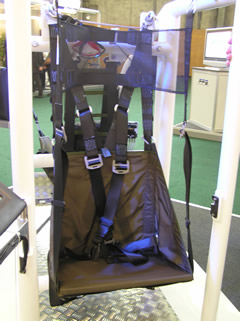



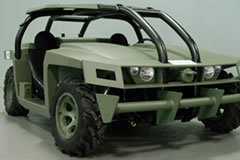
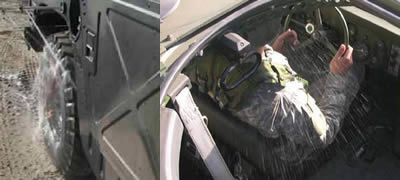
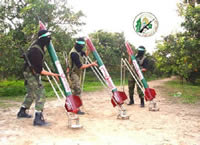
 Thus the Hamas militant leadership has decided it was time to win full control of the Gaza Strip, before it was too late. Indeed, Hamas is now fighting its ultimate battle against Fatah for control of the Gaza Strip. No quarter is asked nor given in this all-out carnage, in which brother fights brother ruthlessly in the lawless streets of squalor.
Thus the Hamas militant leadership has decided it was time to win full control of the Gaza Strip, before it was too late. Indeed, Hamas is now fighting its ultimate battle against Fatah for control of the Gaza Strip. No quarter is asked nor given in this all-out carnage, in which brother fights brother ruthlessly in the lawless streets of squalor. Fatah’s own leadership vacuum is the main reason for the group’s defeat in the current round. Palestinian Authority Chairman Mahmoud Abbas is still not showing signs of determination to intervene forcefully. On paper, Abu Mazen’s loyalist forces should number nearly 60,000 armed troops, but intelligence estimates assess that most of these will not fight, when deployed against Hamas in Gaza. This leadership vacuum is becoming even more blatant by strongman Mohammed Dahlan’s absence from the turbulent region. Dahlan is temporarily being hospitalized in Cairo following back surgery.
Fatah’s own leadership vacuum is the main reason for the group’s defeat in the current round. Palestinian Authority Chairman Mahmoud Abbas is still not showing signs of determination to intervene forcefully. On paper, Abu Mazen’s loyalist forces should number nearly 60,000 armed troops, but intelligence estimates assess that most of these will not fight, when deployed against Hamas in Gaza. This leadership vacuum is becoming even more blatant by strongman Mohammed Dahlan’s absence from the turbulent region. Dahlan is temporarily being hospitalized in Cairo following back surgery. On the other hand, Israel is no longer an innocent bystander to the internal Palestinian fighting. The first civilian casualties from the massive rocket attacks on Sderot made Israel a party to the internal conflict in Gaza and now urgently needs to take drastic measures in defending its civilians. It must be remembered, that Sderot and other targets along the Gaza Strip are located entirely within Israel’s sovereign territory, defined by international law in 1949. It may have been a strategic mistake to withdraw the IDF from the Gaza Strip in 2005, but once this was implemented any incursion by fire into this territory is strictly against international law, calling for full measures in self defense.
On the other hand, Israel is no longer an innocent bystander to the internal Palestinian fighting. The first civilian casualties from the massive rocket attacks on Sderot made Israel a party to the internal conflict in Gaza and now urgently needs to take drastic measures in defending its civilians. It must be remembered, that Sderot and other targets along the Gaza Strip are located entirely within Israel’s sovereign territory, defined by international law in 1949. It may have been a strategic mistake to withdraw the IDF from the Gaza Strip in 2005, but once this was implemented any incursion by fire into this territory is strictly against international law, calling for full measures in self defense. Under the plan, the confederation would be headed by the Jordanian monarch, but both parts of the state will have considerable independence, as well as their own governments. During the Arab-Israeli wars of 1948-49 and 1967, the Western Bank of the Jordan River and East Jerusalem were part of Jordan. The late King Hussein waived Jordan’s claims to Palestinian lands in the late 1980s.
Under the plan, the confederation would be headed by the Jordanian monarch, but both parts of the state will have considerable independence, as well as their own governments. During the Arab-Israeli wars of 1948-49 and 1967, the Western Bank of the Jordan River and East Jerusalem were part of Jordan. The late King Hussein waived Jordan’s claims to Palestinian lands in the late 1980s.
